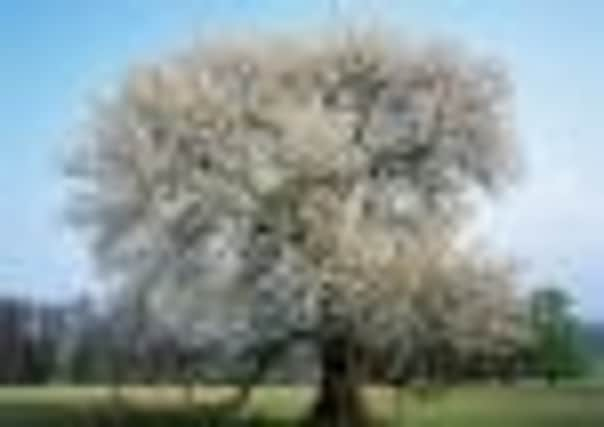Cherry on the top


It seemed strange to be hacking away when certain cherry trees have been in flower for several weeks and will continue to bloom for months. Although you will have had to look closely to spot them because these cherries are not the gaudy spring-blooming varieties, but the more restrained autumn/winter flowerers.
They bloom – quietly and efficiently, providing tiny breaths of life at a time when a lot of nature has got its head down until the temperature takes a turn for the better. Just because they are conservative with a lower-case ‘c’ doesn’t mean they don’t deserve a round of applause.
Advertisement
Hide AdAdvertisement
Hide AdMany people won’t even recognise them for what they are. For this, I blame the Japanese whose ornamental cherries explode with flowers in March and April, peppering the landscape with outrageous explosions of colour. Such is their popularity that, seemingly, no street (or garden) is complete without one.
They are relatively easy and once upon a time took the nation’s heart by storm. We learn with experience – while many of these trees are masterpieces of colour, their roots can have a nasty habit of creeping along just below the soil surface, wreaking havoc on paths and lawns.
And their inability to withstand spring weather means that the blooms are short-lived – whipped away to clog up drains and gutters, falling from grace to become nothing more than piles of dirty horticultural confetti.
Still, you can’t have everything, and before that annual bitter blow, the Japanese can be joys to behold; at least for a couple of weeks.
Advertisement
Hide AdAdvertisement
Hide AdBut their time is yet to come. Right now, P subhirtella ‘Autumnalis’ is the one deserving all the accolades, and it will spend the next few months producing a steady supply of tiny white or pinkish flowers like Christmas fairy lights.
The trees may be beefier than their ornamental cousins – you won’t see many in your average-sized garden – so keep your eyes open for them in municipal parks and gardens where they have the room to grow and show just how beautiful they can be.